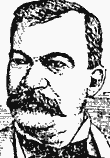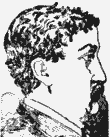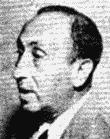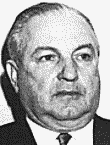New Orleans
New Orleans was the first home of the American Mafia. Crime family roots in that community extend back as far as the U.S. Civil War. For much of its history, the New Orleans Mafia isolated itself from underworld organizations in the rest of the country. This must be partly due to friction between Palermo Mafia authority and the rebellious Monreale-based Stuppagghiara group that took hold in the Crescent City.
Provenzano
1865 – Raffaele Agnello (? to April 1, 1869). Descended from Palermo aristocrats, Raffaele Agnello was a leading figure in the small Sicilian colony in New Orleans. During the Union occupation of the city, Agnello’s gang was trusted to keep order along the French Quarter docks.
1869 – Joseph Agnello (? to July 1872). Believing that a Palermo-Messina feud in the New Orleans underworld has ended in his victory, Raffaele Agnello emerged from hiding and took a victory stroll through the French Quarter. He was shot in the head with a blunderbuss pistol at close range in front of the Joseph Macheca fruit store on April 1, 1869. Agnello’s brother Joseph took over leadership of the Palermo gang and eliminated some Messinian rivals.

1872 – Joseph P. Macheca (1842 to March 14, 1891). Joe Agnello was gunned down on a New Orleans dock in summer of 1872. Though technically not a Mafioso, Macheca was the most powerful man in the New Orleans underworld. In later years, he helped to establish the Matranga family.
1875 – The first Mafia organization of New Orleans was leaderless, as Macheca supported the formation of the Matranga Stuppagghiara group.
1879 – Giuseppe Esposito (? to ?). Accused Sicilian bandit and murderer Giuseppe Esposito escaped from authorities in Palermo. Using connections with Sicilian Mafiosi and businessmen on both sides of the Atlantic, Esposito traveled to New Orleans through New York. Upon his arrival in the Crescent City, he was looked upon as a Palermo Mafia authority and was given control over the New Orleans underworld. Esposito revived the old Mafia faction by putting the Provenzano family in charge of the New Orleans dock rackets.
1881 – Joseph Provenzano (? to ?). Giuseppe Esposito was betrayed to authorities and deported to Italy. The Provenzano clan, made wealthy and powerful by their control of the docks, was momentarily the greatest force in the local underworld.
mid-1880s – The Provenzano family lost control of the docks to the Matranga family. The Provenzanos fought a losing underworld battle from that point on.
1891 – Joseph Provenzano (? to ?). The Provenzano clan ceased to be a major force in the New Orleans underworld.
Marcello (Macheca, Matranga)
1875 – Salvatore Marino (c. 1838 to Sept. 29, 1878). Marino and Salvatore Matranga established a branch of the Monreale-based Stuppagghiari Mafia in New Orleans. The highly secret organization conducted a guerilla war on both sides of the Atlantic against conservative Giardinieri.
1878 – Salvador Matranga (1818 to c. 1895). Marino died of Yellow Fever in September of 1878. Matranga assumed sole leadership of the underworld Monrealesi in New Orleans and brought his two sons, Antonino and Carlo, into the Stuppagghieri society.
1879 – Giuseppe Esposito – see above.

1881 – Charles Matranga (November 1857 to Oct. 28, 1943). Matranga’s Stuppagghieri splintered off from the Provenzano organization after Esposito was deported. Matranga’s group had the quiet support of Joseph Macheca, as it attempted to undermine the Provenzanos.
Mid-1880s – The Matranga group succeeded in winning contracts to provide dock labor to fruit companies in New Orleans. The contracts brought great wealth and influence to the Matranga leadership, while depriving the Provenzanos of the same.
1891 – Charles Matranga, Joseph P. Macheca and others were tried for the 1890 assassination of Police Chief David Hennessy. The men were acquitted. An angry mob stormed the prison. Most of the defendants, including Macheca, were murdered in the Crescent City lynchings. “Millionaire Charlie” Matranga and his chief lieutenant were left unharmed. They emerged from the experience with far greater power.

1922 – Sylvestro Carolla (June 17, 1896, to July 1970). Charles Matranga decided to retire. He designated “Silver Dollar Sam” Carolla as his successor. Carolla was in and out of jail between 1921, when he spent a year and a day in Atlanta Federal Prison, and 1947. He was reportedly jailed for narcotics crimes in 1931, for attempted murder in 1933 and again for narcotics in 1936. That he managed to abbreviate each of his sentences is testament to his political pull. His 1933 sentence of eight to 15 years at hard labor was cut to a year by a pardon from Louisiana’s governor.

1947 – Carlos Marcello (Feb. 6, 1910, to March 3, 1993). Sam Carolla was deported to Sicily in spring of 1947. Marcello apparently became the new boss of the Crescent City’s underworld. Marcello cooperated with U.S. Syndicate leaders like Frank Costello and Meyer Lansky on Louisiana gambling rackets. Phil Kastel also shared underworld interests in regional casinos. Marcello remained a force in New Orleans through a brief deportation to Guatemala in 1961 and an extended prison stay (for RICO violations) beginning in 1981.
